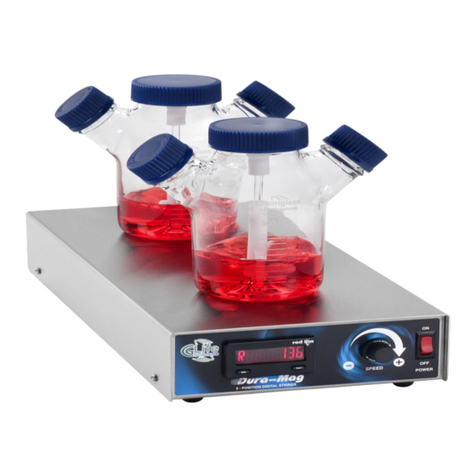
www.cglifesciences.com technical-service@cglifesciences.com
PLEASE NOTE: FILTER REACTORS ARE FOR VACUUM/GRAVITY FILTRATION USE ONLY.
Read Entire Assembly Instructions Before You Begin. Familiarize Yourself with All of the Parts,
and Pay Close Attention to All Notes and Highlights.
Support frames are shipped via common carrier and require loading dock access with a fork lift or
jack. If you do not have a loading dock, then a lift gate-equipped truck must be requested at the
time of order.
For your convenience, the jacketed process filter reactor, the fully assembled reactor head, stirrer shaft
& agitators, Tru-Stir™ stirrer shaft coupling, PTFE stirrer bearing, temperature probe & adapter, S.S.
inlet/outlet adapters, and motor are shipped assembled on the support frame. PTFE sleeves and keck
clips are available separately.
Unpack all of the parts and check against the packing slip to make sure you have received all
necessary components. If possible, keep some of the packaging materials from the wood crates in
case you need to return items for repair or replacement.
Crate # 1:
•Unpack the support frame with reactor and components by removing the plastic electrical
ties that hold the reactor in place and remove the cardboard/foam packing from around the
reactor. Re-tighten all of the Allen screws with the supplied wrenches, adjust all black knobs
and tighten torque knobs. The red silicone pad should be touching the straight section of the
glass below the reactor flange. CHECK ALL ALLEN SCREWS BEFORE PROCEEDING; SCREWS CAN
LOOSEN DURING SHIPMENT.
•Attach the Tru-Stir™ stirrer shaft coupling to the 1/4 HP electric stirrer motor.
Crate # 2:
•Contains the 0-14mm drain valve, motor controller/temperature monitor and other
miscellaneous parts.
Move the reactor assembly and parts near the hood or area where the reactor will be used, but
allow enough space to move freely around the support frame. During setup, preparation, and
process, it is best to keep the wheels in their locked position by stepping down on the tab.
for Vertical
Height
Adjustment
Knobs
Torque knobs should be
checked periodically to
ensure the torque function
has not been adversely
affected by corrosion.

























